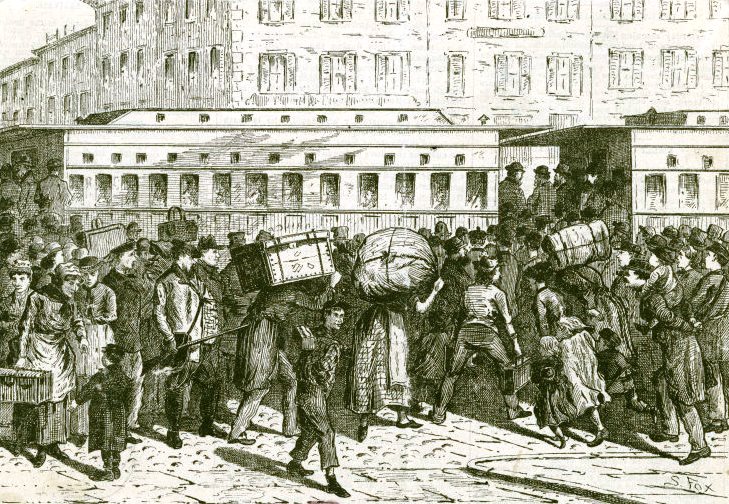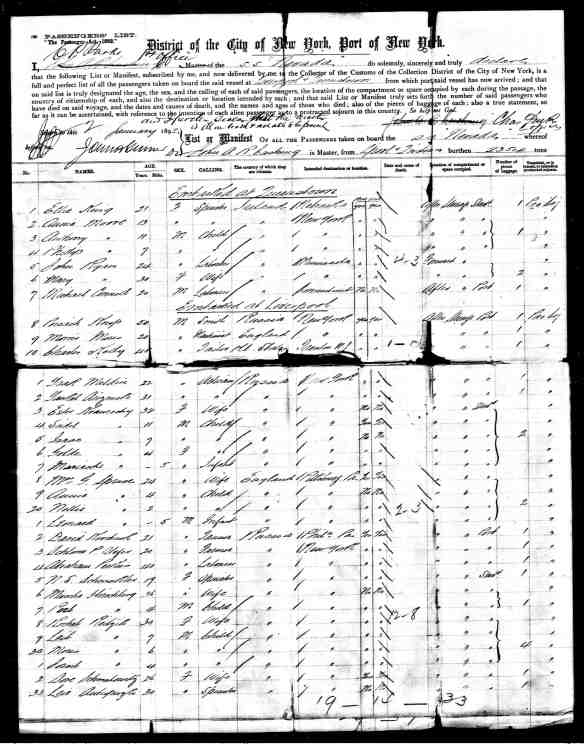
Among the North of Ireland emigrants to New York are many who figured prominently in the religious life of the colony. Rev. Charles Inglis, afterwards Rector of Trinity Church, came here as a missionary in 1759. In 1766 Philip Embury arrived, and founded the John Street Church. He is among the pioneers of the Methodist Episcopal Church in America. In that year Paul Runkle, Luke Rose, Jacob Heck, Peter Barkman and Henry Williams, all referred to as Irish Palatines, landed. Charles White and Richard Sause, prominent in Methodist circles, came from Dublin in 1766, and later, John McClaskey and Paul Hick.
Major Henry Dawson left Dublin in 1760 and resided here for many years, serving as Clerk of the Common Council for twenty-six years. Among the freemen of the city we find the
following significant names: 1740, Bartholomew Ryan; 1741, John Ryan and John Lamb; 1743, Patrick Phagan, John McGie, John Christie, John Brannigan, John Connelly, Andrew Cannon, William Blake; 1744, Andrew Carrol, Anthony Glin; 1745, Benjamin Daly, John Carr, Bryan Nevin; 1746 Donald McCoy, Hugh Rogers; 1747, Timothy Allan, Hugh Mulligan, James Welch, Hugh Gill, John McGoers, Jr., Alexander McCoy; 1748 Philip Hogan, Matthew Morris; 1749, Alexander Connelly, physician. In 1761 the poll list included seventy-four characteristic Irish names.
Immigration from Ireland to the colonies in general did not become noticable until 1718. It was then a steady influx, though not very large in numbers, until 1755, when it fell off and remained of less amount until after the American Revolution. At the outset, the Irish families immigranting were almost entirely Presbyterians. The first Presbyterian clergyman in New York was Rev. Francis McKemie, born in Ireland, who arrived here in 1707. He was a brave and fearless man, whose pulput utterances led to his trial for libel, upon which he was aquitted. The large Catholic exodus did not begin until after
American Independence had been achieved.
A prominent citizen of New York in the eighteenth century was Sir Peter Warren, born in County Meath in 1702, and the uncle of the famous William Johnson, also born in County Meath in 1715, whose life is a romance. Warren was a very heavy real estate holder in the city, owning 260 acres here, much of his holdings being of land which since has become enormously valuable. Warren Street is named after him. He was a prominent social figure in Colonial life. Among the names of those who were active in commercial life in New York City, prior to the American Revolution, are many Irishmen, who figured as some of the most successful and reputable merchants of their time. Such were the two Wallances, Alexander and Hugh, who were in business from 1750, Hugh being the second President of the Chamber of Commerce; Miles Sherbrooke, one of the founders of the Chamber
in 1768, and a member of the Committee of Correspondence, the advance guard of the Revolution; Patrick McDavitt, an auctioneer in Kings Street, from 1768; Alexander Mulligan, an importer of Irish goods, beef, linen, and other commodities; Hercules Mulligan, a merchant tailor; Oliver Templeton, an auctioneer; Daniel McCormick, also an auctioneer. During the time of the Revolution and following it, we find the names of Michael Connolly, dealer of lumber; William and James Constable, in the West Indian, China and Indian Trade; the Pollacks, Carlisle, George and Hugh; John Haggerty, an autioneer; William Edgar; John Glover; John W. and Philip Kearney, commision merchandise; John and Nathan McVickar, linen drapers; Alexander McComb, a fur dealer and then a land speculator, who invested heavily in city real estate; and Michael Hogan, in the commission and shipping business, who owned, and in memory of his birthplace in County Clare, named the northern part of his holdings, Claremont. All these men were reprentative, flourishing men, who stood as high in public esteem as any of the residents of the city of that day. They were all either Irish by birth or by immediate descent. How many of their poorer fellow-countrymen were then here we have no means of knowing, but it is signifigant that while the Jewish people had a synagogue here from 1730, there was no Catholic place of worship from the time when Dongan had Mass said within the Fort until the year 1786.

